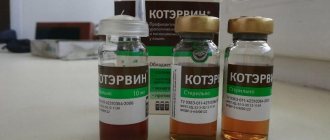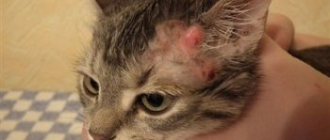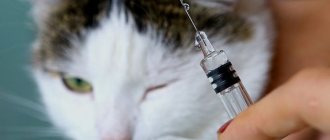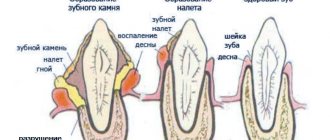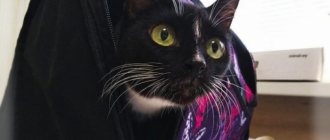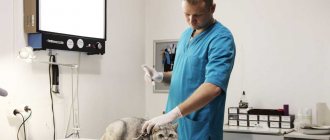Vaccination means the introduction of an animal antigen into the body in order to form immunity to a given infectious disease. Vaccinations for dogs and cats will help significantly reduce the risk of infection and make it easier to transfer the disease if infection does occur.
Note! For subsequent participation in exhibitions and traveling abroad with a pet, it is very important to have a correctly issued and completed veterinary passport.
All information about the vaccinations received by the animal is entered into a veterinary passport issued by a veterinarian. In this case, the following data is indicated: date of vaccination, type of vaccine, registration number in the registration register.
General rules for vaccinating pets
The vaccination rules for both dogs and cats are the same:
- The animal must be healthy at the time of vaccination.
- 10 days before vaccination, it is necessary to carry out treatment against skin parasites - ticks, fleas, lice, as well as deworming.
- Although your pet will be examined by a veterinarian before vaccination and will make sure he is in excellent health, it is advisable to monitor the animal, its appetite, general condition for 3 days before vaccination, and also measure its temperature at the same time.
Normally, in healthy dogs it is 37-39C, in puppies – no higher than 39.5C, in kittens – from 38.5 to 39.5C, and in adult cats and cats – 38-39.5C.
Remember! If your pet is allergic, notify your veterinarian. It is possible that the animal will be given diphenhydramine before vaccination.
Step-by-step instruction
Carrying out any medical procedures on an animal is stressful for both the cat and the owner. But if a person can cope with emotions, then a cat will need help. You should act as delicately as possible. You can gain trust in the animal by using light stroking and feeding it with your favorite treats.
As soon as the cat feels the needle approaching, it will begin to struggle, and it will be very problematic to give the injection on its own. It is advisable to involve an assistant in the process who will hold the pet.
Next you should proceed according to the algorithm:
- Choose a suitable syringe. Insulin syringes are very convenient to use. They are equipped with a small, thin needle, and the volume allows for the administration of a single dose of medication. Syringes with a capacity of 1, 2 or 5 ml are also suitable. An insulin syringe is not used to administer oil solutions, since the viscous consistency of the medicine leads to blockage of the needle.
- Carry out antiseptic procedures: wash your hands, treat them with sanitizer.
- Prepare the medicine. It is necessary that its temperature is 37-38°C. To do this, you should fill a container with water at a temperature of 38°C and place an ampoule with the medicine there. Then you need to open the ampoule and draw the prescribed dose of the drug into the syringe. The needle should be held strictly by the cap. Next, you need to check the functionality of the needle and release air bubbles from the syringe. To do this, just turn the syringe over and press the plunger until a few drops of the medicine come out.
If it turns out that there is too much medicine in the ampoule for one injection, you need to take several doses into different syringes. Then tightly cap the needle and move it to the side door of the refrigerator. So the medicine can be stored for 3 days.
- Determine the injection site. The leg is most often used for this, and more specifically the thigh. There are several options for where to give a cat an intramuscular injection. When choosing a location, you should carefully feel the animal's thigh, determining where the largest amount of muscle tissue is located. At the same time, the location of bones and joints is determined. It is strictly forbidden to inject into them, otherwise complications and painful sensations cannot be avoided. Also, the needle should not get into the vessel. Having determined where to inject, it is necessary to check the skin for the presence of tubercles, abrasions, hematomas and other pathologies. If the puncture site is heavily covered with hair, it can be cut off. It is not necessary to treat your cat's skin with an antiseptic.
- Give an injection. The needle should be inserted with a sharp, confident movement. The puncture depth is 1/2-2/3 of the needle length. When determining the depth, it is important to focus on the size of the animal. The syringe must be held at an angle of 90° to the surface of the skin. To check whether the puncture was successfully made, you must, without removing the needle from the muscle until the medicine is administered, slightly pull the syringe plunger towards you. If there is blood in the syringe, you need to re-puncture. If the medicine gets into the vessel, it can lead to the development of inflammation, and if an oil solution is introduced into the vessel, the pet may develop fatal diseases.
After the manipulation, it is necessary to calm the animal and massage the injection site.
Dog vaccination
It is dog vaccination (at home or in a veterinary clinic) that allows you to protect your pet from rabies, hepatitis, canine distemper, leptospirosis and parvovirosis (parvovirus).
The vaccination schedule for cats includes vaccination against rabies, calcivirus infection, viral rhinotracheitis and feline panleukopenia.
The vaccination schedule for dogs is drawn up depending on the vaccines used: Nobivak (Netherlands), Eurikan or Hexadog (France), Multikan-8 (Russia), against ringworm - Vakderm or Polivak-TM (Russia).
Correcting errors during intramuscular injections
The owner's hesitant actions are usually caused by anxiety in the process of working with the cat, and the stress must be leveled. Studying the material on how to give an intramuscular injection to a cat is sometimes not enough, so it is worth familiarizing yourself with the information on how to act in unforeseen situations:
- The needle hit a bone, ligament, joint, or sciatic nerve of the pet. To prevent this from happening, you must follow the instructions and do not prick your leg at random, but confidently fix the muscle between your thumb and index finger, and only then make a puncture. If the puncture does not happen where planned, it’s okay. It is necessary to slightly pull the needle back and continue injecting the solution.
- The cat scratches during the injection. It is worth postponing the procedure for a while, visiting a pet store and purchasing “soft paws”. These are overlays that are attached with superglue and cut off as the nails grow. With them the cat will not be able to scratch.
- An air bubble has entered the muscle. If the procedure for removing air from the syringe was previously carried out, and a small bubble got in, it will not harm the pet.
- I have to give several injections with different medications. It is worth asking your veterinarian to install a catheter first. In the absence of a catheter, you will have to give injections frequently, and soothing drops, for example, Kot Bayun, will help to relax the cat.
- During the injection into the withers, drops of medicine appeared on the back side. This means that the needle has pierced the stretched skin on both sides, and it is not difficult to fix the problem; just pull the needle slightly towards you.
In any situation, you should control yourself, act calmly and confidently. This will calm the animal and reduce the risk of problems.
Vaccination of cats
Often the owners of these animals do not know what vaccinations are given to cats and when, because they believe that vaccination is not necessary for their pet. But even if it is constantly in the apartment, a cat can get sick - the infection can be brought into the house on clothes, shoes, and dirty hands. There is a risk of contracting an infection when visiting a veterinarian while waiting for your turn.
Therefore, any, including complex vaccinations for cats, in the most optimal form, should be done at home.
The most famous vaccines for cats are Nobivak (Netherlands), Leucorifelin (France), Multifel-4 and Polivak-TM (Russia)
Vaccination schedules for cats and dogs:
Vaccination schedule with Nobivac (Netherlands):
If the first vaccination is given at 4-6 weeks, the dry live vaccine against canine distemper and canine parvovirus, Nobivac Puppi DP, is used.
At 8-9 months - complex vaccination Nobivac DHPPI + Lepto.
Then after 3-4 weeks Nobivac DHPPI + Nobivac RL. Further vaccination is carried out annually.
If the first vaccination is given to a puppy at 2 months, Nobivac DHPPI + Nobivac Lepto vaccination is performed. After 3 weeks Nobivac DHPPI + Nobivac RL. Then annually once Nobivac DHPPI + Nobivac RL.
Vaccination scheme Eurican (France):
For vaccination, Eurican DHPPI2 (against adenovirus, plague, parvovirus enteritis, parainfluenza) + Eurican L (against leptospirosis of 2 types) or Eurican RL (against rabies and leptospirosis of 2 types) is used.
Primary vaccination Eurikan DHPPI2-L consists of 2 injections: 1st at the age of 7 weeks, 2nd after 3 - 5 weeks. Primary vaccination Eurikan DHPPI2+LR: at the age of 3 months.
Revaccination after a year.
Scheme for the Hexadog vaccine (France):
used starting from 3 months of age, revaccination every other year. Used against adenovirosis, distemper, parvovirosis, major leptospirosis and canine rabies.
Scheme for the Multikan-8 vaccine (Russia):
- Vaccination against canine distemper virus, canine adenovirus type 2, parvovirus and canine coronavirus, leptospirosis and rabies.
- Puppies are vaccinated at 8-10 weeks of age and again after 21-28 days.
Revaccination of puppies is carried out at the age of 10-12 months. Adult dogs are vaccinated once a year.
Instructions: how to give a cat an injection
I would like to leave the dispensing of medications by injection to professional veterinarians. However, this does not always work out: maybe the doctor prescribed a long cycle of antibiotics after sterilization or other abdominal surgery, maybe you are away from veterinary clinics, or maybe the cat is too stressed after each trip, and it’s easier to inject it yourself. Well, this can be organized - especially since basic treatment skills, such as the ability to give pills and give subcutaneous and intramuscular injections, should ideally be mastered by every pet owner.
We tell you how to properly give an injection to a cat.
Where is the injection given?
In terms of injections, cats are no different from humans, dogs and most other mammals: drugs are injected into them intramuscularly, subcutaneously, intravenously, intraarticularly and into the abdomen. Intra-articular, intravenous and intra-abdominal injections are quite complex and are fraught with serious complications in case of mistakes, so it is really better to leave them to a professional - especially since they are required much less often than “simple” intramuscular and subcutaneous ones. As a last resort, the veterinarian himself will show you how to inject, or install a catheter in the vein so that you do not have to inject yourself every time.
With injections under the skin and muscle, everything is much simpler.
- If you need to inject intramuscularly, focus on the back of the shoulder and hind legs, where the muscles are powerful and “fleshy”.
- If you need to prick subcutaneously, the optimal places are the withers and the fold between the body and the thigh of the hind leg, where the skin “dangles” because it is not attached to the muscles.
We give an injection in the thigh
- Place the animal on a flat, non-slip surface so that it is convenient for you to administer the medicine.
- Feel the thigh muscle, massage it a little, make sure the cat is calm and relaxed. If the animal resists, it makes sense to wrap it in a diaper or retainer bag, pulling its hind leg out.
- Insert the needle at an angle close to 90º. The needle should go no more than a centimeter into the muscle: remember that cats’ muscles are not as powerful as humans’, and if inserted too deeply there is a risk of damaging the sciatic nerve.
- The intramuscular injection is administered relatively slowly. The needle in the muscle remains motionless; at the end of the procedure, it is removed with a quick, self-directed movement.
We give an injection under the skin
- Take the cat by the withers and pull back the skin, making a “fold.”
- Pierce the fold at an angle of approximately 45˚ relative to the surface of the animal's body. Make sure that the needle does not pierce through the skin fold: if droplets of liquid appear on the opposite side of the fold, pull the syringe slightly towards you.
- Administer the medicine. Unlike intramuscular injection, the medicine can be administered quickly under the skin.
- Quickly remove the needle.
Subcutaneous injections are considered safer because there is no risk of damaging the nerve, and they also cause less discomfort to the animal. However, the skin at the cat's withers is thicker than around the hips, it is more difficult to pierce, and some effort will be required. It's good if your assistant can hold the animal.
How to choose the right syringe and needle
Cats do not have such thick muscles as humans, and if “human” syringes and needles are suitable for them, then they still need to be selected taking into account the anatomical characteristics of the animal. If you need to administer up to 1 ml of medication, take an insulin syringe: it will cause your pet the least discomfort. If there is more medication, try to choose a shorter needle, especially when administering intramuscularly, or clearly stop in the area of a centimeter directly during the injection process.
An injection under the skin is safer and there is no need to worry.
And one more recommendation: “oily” drugs require a wider needle diameter, take this into account when purchasing “consumables” at the pharmacy. “Oily” medications should under no circumstances enter the bloodstream: you can check whether the needle has hit a vessel by slightly pulling the syringe plunger towards you. When it enters the vessel, the syringe will begin to fill with blood.
Otherwise, the recommendations echo those for treating people:
- use a sterile syringe,
- pre-wash your hands and treat them with antiseptic,
- alternate paws if several injections per day are prescribed,
- do not touch the needle with bare hands,
- Do not mix medications in one syringe without consulting a doctor.
If you follow the veterinarian's recommendations and use a sterile disposable syringe, there should be no complications.
We recommend that you carefully question the doctor about the mechanics of the procedure, how to prepare the medications, enlist the help of an assistant and a restraint bag in case the cat does not want to sit still, and also carefully monitor the pet’s condition after the injection. If a nerve gets hit, the animal may begin to limp, and if the fall on the paw does not go away after 2-3 days, be sure to contact a veterinarian. Related Products:
Additional vaccinations (as needed):
against dermatomycosis (microsporia and trichophytosis) with the Polivak-TM vaccine (Russia), carried out 2 times with an interval of 10 - 14 days, annually,
or the Vakderm vaccine (manufacturer Vetzverotsentr, Russia), done 2 times with an interval of 10 - 14 days, annually.
Regimen for the Nobivac vaccine (Intervet, Netherlands): Nobivac Tricat: against viral rhinotracheitis, calicivirus infection and feline panleukopenia.
Done at the age of 8-12 weeks - the first vaccination. After 3-4 weeks - re-vaccination. It is given together with the Nobivac Rabies rabies vaccine.
Scheme for Leucorifelin (Merial, France):
The first vaccination with Leucorifelin (against panleukopenia, herpesvirus and calicivirus) is at 7-8 weeks.
Revaccination - after 3-4 weeks with the Leucorifelin Quadricat vaccine (against panleukopenia, herpesvirus and calicivirus plus rabies).
Revaccination must be repeated every year.
Scheme for Multifel-4 (Narvak, Russia):
- Multifel-4 is used against panleukopenia, rhinotracheitis, calicivirus and feline chlamydia viruses.
- The first vaccination for a kitten is at 8-12 weeks.
- Repeated after 21-28 days.
- Revaccination - annually
Additional vaccination (if necessary) - in addition to the schemes above.
Polivak-TM (Russia) - vaccine against ringworm.
It is done annually, twice with an interval of two weeks.
General Tips
I suggest considering general tips that will help you carry out manipulations carefully and safely for your pet.
Choosing a syringe
Follow your veterinarian's recommendations regarding syringe volume and needle thickness. Insulin syringes are used for cats because their needles are thinner.
An insulin syringe will not work if:
- you need to administer a dose of more than 1 ml.
- if the substance is viscous and dense, as well as oil-based.
- if the subcutaneous fatty tissue has a high density, since a thin needle may break during insertion.
If a 2 or 3 ml syringe was selected, try not to insert the needle too deeply.
Medicine dosage
Please note that doctors sometimes prescribe one "cube" of medicine, and syringes are intended primarily for people. A syringe cube is 1 ml. For pets, one and a half doses are often prescribed, and syringes are not always marked with 0.5-2.5 ml.
I will explain using the example of a 2 ml syringe. If you need to inject 0.4 ml of medicine, this means that you should not draw 4 ml, but only fill the first four divisions of the syringe! A large dose can cause irreparable harm to the animal!
If medications are prescribed in grams, check the dosage in milliliters. If you have been prescribed NaCl 0.9% (saline), the formula for it is simple: 1 ml = 1 cube = 1 g.
How to draw up medicine correctly
Before handling, wash your hands thoroughly with soap.
First you need to open the ampoule and only after that the syringe. Point the needle into the ampoule and try not to let it touch the walls of the vessel.
Draw up the required amount of medicine.
Lift the syringe with the needle up and tap it with your fingers. Air bubbles will rise and will need to be released by pressing the plunger.
Always take a little more medicine than directed. When you release the air, some of the medicine will come out and you will get the right amount of medicine.
Sterility and safety
It is possible to treat your pet at home, but only if sterility is maintained.
- Never touch the needle with your hands, even with gloves!
- Do not reuse the syringe, even for a new dose of the next medicine.
- Do not use the same syringe for different medications, as a chemical reaction may occur.
- Up to 60 ml of the drug is injected into one point subcutaneously and up to 1 ml intramuscularly. Change injection sites if you need to inject the medicine several times a day.
- The issue of disinfecting the injection site is controversial, since the skin of cats is covered with a natural antiseptic. Check with your doctor about this detail.
- Disinfection is applicable for hairless cats.
- The injection is given only in an intact area of the body that is free of eczema, lichen, wounds and pus. Read about how to treat lichen in a cat in my other article.
Fixing the pet
It is best to carry out the procedure together, so that one can hold the cat and the other can carry out the manipulations. There are several ways to restrain cats.
Method number 1. Lying down
Grab your pet by the withers in a standing position and gently press it against a flat surface until it is in a lying position. If you are giving the injection alone, squat down and hold your pet between your thighs so that the back legs are between your legs. In this position it is easy to give a subcutaneous injection.
Method number 2. On the side
Take the pet by the withers in a standing position, with the other hand by the paws and lay it on its side. If the cat is aggressive, the second person should stand behind the pet and hold it by the limbs, pressing the body to a flat surface with the forearm.
Method number 3. In a bag or towel
A good way is to use a fixing bag, the equivalent of which can be a thick towel. You need to wrap it tightly around your pet, leaving the injection site open.
To prevent the cat from biting, a special bridle is used.
- Take a string or thick tape and thread it through a rubber tube about 10 cm long.
- Open your pet's mouth and place the bandage so that the rubber tube is in the mouth.
- Tie the lace at the back of your head.
If you carry out manipulations alone, pinch the cat's withers with a clothespin to create a feeling of false fixation.
Types of vaccinations - comprehensive vaccination for cats
- Veterinarians divide all vaccinations into:
- Required.
- Desirable.
- Optional.
To mandatory vaccinations
include vaccination against rabies, since this infection is deadly and is transmitted from a sick animal to humans.
Next in importance is vaccination against canine distemper (panleukopenia). The very name of the disease suggests that the mortality rate from it is very high (up to 70-80%), especially among young animals. Calciverosis and rhinotracheitis also often affect kittens and adult cats, so veterinarians recommend vaccinations against them as mandatory.
Required vaccinations are those given for diseases that are common in the area (eg, chlamydia, ringworm, infectious peritonitis).
Is comprehensive vaccination required for domestic cats?
Some cat owners think that a pet cannot become infected with an infectious disease within the walls of its own home, without contact with the street and stray relatives. Of course, the risk of getting sick is less, but do not forget that you go outside and can bring some cat virus with particles of soil, dust, on your hands and shoes. A pampered pet has even less chances of infection than a street cat, since its immunity is weaker and depressed. Therefore, domesticated kitties need to visit a doctor and get vaccinated.
Complex vaccination for cats: selection of complex vaccines
Our market offers polyvaccines from several of the world's largest and domestic manufacturers. All of them are certified and approved for use by state veterinary supervision. Your veterinarian will advise you on which comprehensive vaccination to use for your pet. At our center, specialists will discuss with you the choice of a particular vaccine, since each of them includes its own components.
- The most popular vaccines:
- produced (Holland) - “Nobivak Triket”, “Nobivak Forket”, “Nobivak Rabies”,
- “Quadricate” and “Leukorifelin” from the French manufacturer Merial.
- Russian vaccine - "Multifel-4"
- live vaccines "Purevax" from Merial, France.
- "Fel-O-vax" made in the USA.
All of these polyvaccines contain components that protect against rhinotracheitis, calciverosis, panleukopenia, and selectively against rabies, chlamydia, herpesvirus, and feline viral leukemia.
What does a comprehensive vaccination give for cats?
A vaccine is a biological product containing strains of weakened or killed pathogens. When introduced into the body, it triggers the body's immune response, which fights the viral infection and produces active immunity. Now, as soon as a living, active virus enters the body again, the immune system immediately “recognizes” it and destroys it with the help of specific antibodies. Nowadays, complex vaccination for cats is widely used, which provides protection against several infections at once.
and requires two administrations at the beginning, and then repetition every year.
